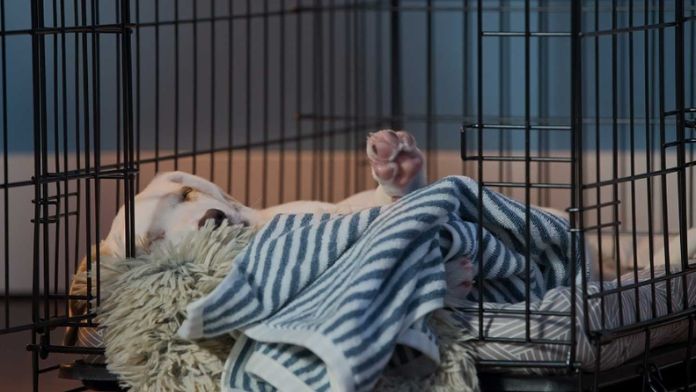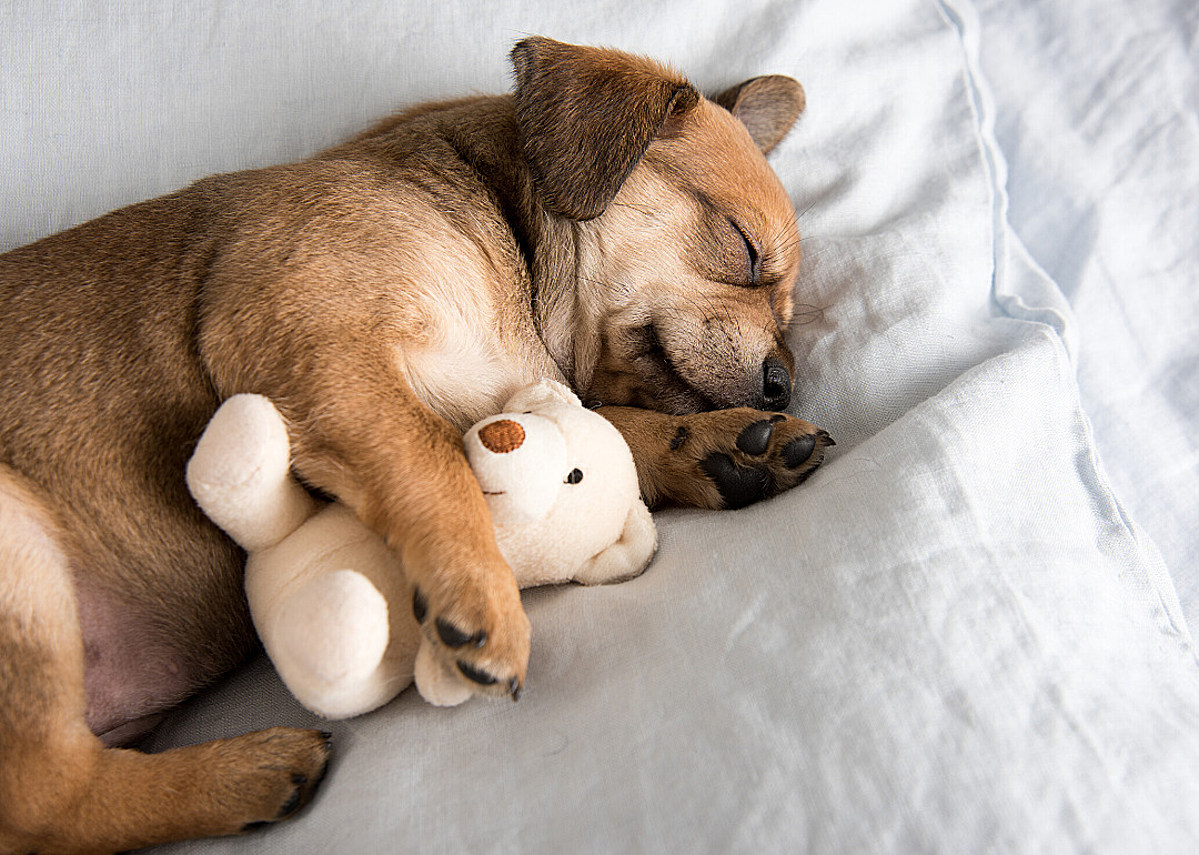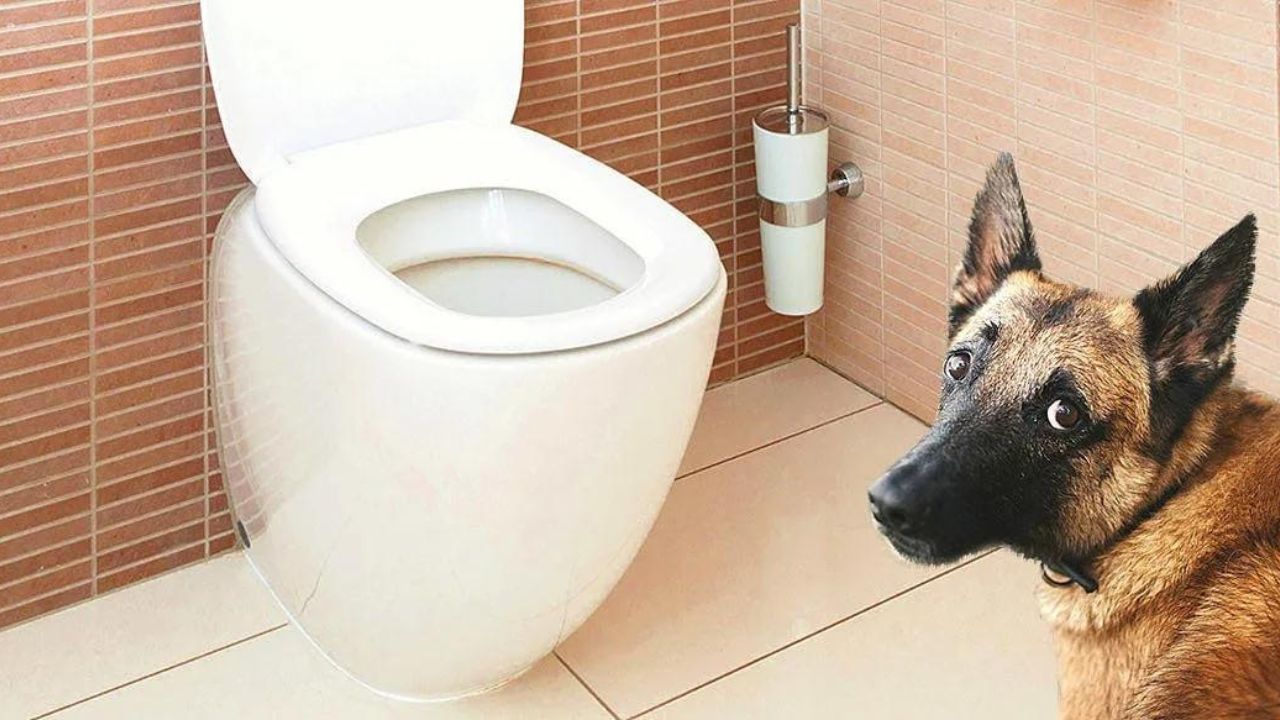
Puppy sleep training can be challenging but essential for you and your furry friend. According to the American Kennel Club, puppies need between 15 and 20 hours of sleep daily, which can affect their behavior and health. However, common puppy sleep mistakes must be considered to complete puppy sleep training properly.
While puppy sleep training may initially seem overwhelming, avoiding common mistakes can make the process smoother. This article will discuss the most common mistakes during puppy sleep training and provide tips and advice for avoiding them. From inconsistent sleep schedules to overstimulation before bedtime, we’ll cover everything you need to know to help your puppy get the restful sleep they need.
But why is puppy sleep training so important? Besides preventing those bleary-eyed mornings and cranky puppies, sleep plays a crucial role in a puppy’s physical and mental development. During sleep, the body repairs and restores itself, and the brain processes the day’s events and forms new neural connections. Your puppy may become easily distracted, irritable, and aggressive without enough sleep.
So, please grab a cup of coffee, and let’s dive into puppy sleep training. By the end of this article, you’ll have all the tools you need to help your puppy get the restful, rejuvenating sleep they need to grow into a happy and healthy adult dog.
Mistake #1: Inconsistent Sleep Schedule
An inconsistent sleep schedule is one of the most common mistakes in puppy sleep training. Just like humans, puppies thrive on routine and consistency, and a lack of a regular sleep schedule can disrupt their natural sleep patterns. Puppies need plenty of rest to grow and develop, so it’s essential to establish a consistent sleep schedule from the beginning.
Think about your sleep schedule – you probably go to bed and wake up around the same time every day. This routine helps your body adjust to the natural rhythms of the day and night, making it easier to fall asleep and wake up refreshed. Puppies are no different – establishing a regular sleep schedule will help them feel more secure and comfortable in their new home.
Solutions:
Start by setting a specific bedtime and wake-up time and sticking to them as closely as possible. Ensure your puppy has plenty of time to nap during the day, but avoid letting them sleep too much during the late afternoon or evening, as this can disrupt their sleep schedule.
Another essential factor in establishing a consistent sleep schedule is creating a bedtime routine. Like a bedtime story or warm bath helps kids wind down before bed, a bedtime routine can help your puppy relax and prepare for sleep. Some ideas for a bedtime routine include a short walk or playtime, a snuggle session, or a calming massage.
Finally, remember that consistency is key in puppy sleep training. Don’t let weekends or special occasions disrupt your puppy’s sleep schedule, which can confuse them and lead to sleep problems. With patience and dedication, you can establish a consistent sleep schedule for your puppy to help them grow into a happy, healthy adult dog.
Mistake #2: Not Creating a Sleep-Conducive Environment
We all know that a comfortable sleeping environment is crucial for a good night’s rest. The same goes for our furry friends! One common mistake during puppy sleep training is not creating a sleep-conducive environment. Your puppy’s sleeping area should be a cozy, safe, and calming space that encourages restful sleep.
Solutions:
Here are some tips for creating a sleep-conducive environment for your pup:
Choose a quiet, dark space.
Puppies are easily distracted and can be awoken by loud noises or bright lights. Choose a space in your home that is quiet and dark to ensure your puppy isn’t disturbed during their slumber. You can also use blackout curtains or blinds to darken the room and block out outside noises.
Invest in a comfortable bed.
Just like us, puppies need a comfortable bed to get a good night’s sleep. Consider investing in a high-quality bed that supports your puppy’s joints and muscles. A bed that’s too hard or soft can cause discomfort and lead to a restless night’s sleep.
Control the temperature
Puppies are sensitive to temperature changes, so keeping their sleeping area comfortable is important. According to the American Kennel Club, the ideal temperature for a puppy’s sleeping area is between 68 and 72 degrees Fahrenheit. Depending on the weather, you can use a heating pad or a fan to regulate the temperature.
Create a soothing atmosphere.
A calming atmosphere can help your puppy relax and fall asleep faster. Consider using a white noise machine or playing soft music to create a soothing background noise. You can also use essential oils or pheromone sprays to create a calming scent in the room.
Mistake #3: Not Enough Exercise and Stimulation
One of the most common mistakes people make in puppy sleep training is not providing enough exercise and stimulation during the day. Puppies have abundant energy; if they don’t have a healthy outlet, they may struggle to fall asleep at night. In fact, according to a study by the American Veterinary Medical Association, puppies that get enough exercise and stimulation during the day have a better chance of sleeping through the night.
Solutions:
The first step is to understand your puppy’s needs. Different breeds and ages of puppies require different activity levels, so it’s important to research and talk to your veterinarian to determine what’s best for your furry friend.
Once you understand your puppy’s needs, you can create a daily exercise and stimulation routine. This can include walks, playtime, and training sessions. Not only will exercise and stimulation help your puppy sleep better at night, but they will also improve their overall health and well-being.
Remembering exercise and stimulation should be tailored to your puppy’s personality and interests are important. Some puppies may prefer a game of fetch, while others may enjoy a hike or a swim. Experiment with different activities and find out what your puppy enjoys the most. This will make exercise and stimulation more enjoyable for your furry friend and strengthen your bond with them.
Mistake #4: Using the Wrong Crate
A crate is one of the most important tools for successful puppy sleep training. A crate is a safe and comfortable space for your puppy to sleep in, and it also helps with potty training and reducing destructive behavior. However, using the wrong crate can lead to sleep problems, such as whining, breathing, snoring loudly, and even aggression.
Solutions:
First and foremost, it should be the right size. A crate that is too small will make your puppy feel cramped and uncomfortable, while a crate that is too big may give your puppy enough room to use one end as a bathroom and the other for sleeping. A good rule of thumb is that your puppy should have enough room to stand up, turn around, and lie down comfortably.
Additionally, the material of the crate can make a big difference. Plastic crates tend to be more den-like and can provide a sense of security for your puppy. On the other hand, wire crates are more open and allow for better airflow. Whichever type of crate you choose, ensure it’s sturdy and secure, with no sharp edges or corners that could harm your puppy.
It’s also important to consider the location of the crate. The crate should be in a quiet, low-traffic area of your home, away from distractions and noisy environments. Avoid placing the crate in direct sunlight or a drafty area, as this can make your puppy uncomfortable and affect their sleep.
Mistake #5: Overstimulation Before Bedtime
Overstimulation before bedtime can be one of the most detrimental common mistakes in puppy sleep training. Just like human babies, puppies can become overstimulated by too much activity, noise, or excitement, making it difficult to settle down and fall asleep.
Solutions:
Playing rough games, running around the house, watching TV or playing with electronic devices, or receiving too much attention and affection from their human can all lead to overstimulation in puppies. It’s important to remember that puppies have a shorter attention span than adult dogs and can quickly become overwhelmed by too much stimulation.
Overstimulation before bedtime can lead to a vicious cycle of restlessness and wakefulness, making it difficult for puppies to get the sleep they need. Not only can this cause health problems, but it can also result in behavioral issues such as hyperactivity, aggression, and destructive behavior.
So, how can you avoid overstimulation before bedtime and ensure your puppy is ready for a good night’s sleep? The first step is establishing a bedtime routine that includes calming activities such as quiet play, gentle grooming, and a short walk or potty break. This routine will help your puppy understand that it’s time to wind down and prepare for sleep.
Limiting your puppy’s exposure to stimuli that may cause overstimulation, such as loud noises, bright lights, or busy environments. Consider turning off the TV, closing the curtains, and keeping the house quiet in the hour leading up to bedtime.
Mistake #6: Ignoring Your Puppy’s Signals
Ignoring your puppy’s signals can lead to significant problems in sleep training. Just like humans, puppies have different sleep patterns and preferences. While some may prefer to sleep in complete darkness, others prefer some ambient noise or light. Ignoring your puppy’s signals and forcing them to adapt to your sleep preferences can lead to insomnia, anxiety, and other sleep problems.
Understanding your puppy’s body language and behaviors is important when communicating their sleep preferences. Signs that your puppy is tired may include yawning, disinterest in playing, and resting their head on the ground. On the other hand, if your puppy is restless, pacing, or whining, it may be uncomfortable and unable to sleep.
Ignoring these signals can also lead to behavioral issues, such as destructive chewing or excessive barking. Puppies who are tired and not getting enough sleep may become irritable and unable to focus, leading to negative behaviors.
Solutions:
Please watch their body language and behaviors to avoid ignoring your puppy’s signals. If your puppy seems tired, provide them with a comfortable sleeping space that fits their preferences. If restless or anxious, try providing white noise or calming music to help them relax.
Another way to avoid ignoring your puppy’s signals is to establish a consistent sleep routine. Puppies thrive on routine, and establishing a consistent bedtime routine can help them understand when it’s time to sleep. This can include activities like a pre-bedtime walk, a calming massage, or a special treat before bed.
Mistake #7: Inconsistent Bedtime Routine
Just like humans, puppies thrive on routine and structure. A consistent bedtime routine is crucial for helping your puppy feel secure and relaxed and establishing healthy sleep habits. However, many pet owners need a consistent bedtime routine, leading to confusion and sleep disruption for their furry friends.
Solutions:
It can vary depending on your puppy’s needs and preferences, but generally, it should involve some calming activities that help your puppy wind down before sleep. For example, you might take your puppy for a short walk or play a gentle game of fetch to help them release any excess energy. Then, you could give them a warm bath or a gentle massage to help them relax their muscles and soothe any aches or pains.
Once your puppy is clean and relaxed, it’s time for some quiet time. This could involve cuddling on the couch or reading a book while your puppy snuggles on your lap. You could also offer your puppy a special bedtime treat or toy to help them associate bedtime with positive experiences.
Mistake #8: Allowing Your Puppy to Sleep in Your Bed
Ah, the cozy comfort of snuggling up with your furry friend in bed – what could be better? While it may seem like a good idea to let your puppy sleep in your bed, it can lead to a variety of sleep problems for both you and your pup.
First and foremost, sharing your bed with your puppy can disrupt your sleep and lead to a lack of quality rest. Puppies are notorious for their restless sleep patterns, including whimpering, whining, and running. These disruptions can make you groggy and irritable in the morning, making it harder to get through the day.
Additionally, allowing your puppy to sleep in bed can create confusion about boundaries and reinforce bad behavior. If your puppy learns, they can jump into bed with you whenever they want; they may become more demanding and less responsive to commands. This can lead to a breakdown in the owner-puppy relationship, making it harder to establish good sleep habits down the line.
Solutions:
The key is to establish boundaries and provide a comfortable sleeping environment that’s just for them. Start by setting up a designated sleeping area, such as a crate or a comfortable dog bed, in a quiet and dark part of the room. This will help your puppy associate that spot with sleep and relaxation.
You can also provide a cozy blanket or a favorite toy to help your puppy feel more comfortable in their sleeping area. And if your pup does jump up onto your bed, gently but firmly guide them back to their sleeping spot. Over time, your puppy will learn that their designated sleeping area is the best resting place and will be more likely to settle down independently.
Mistake #9: Using Punishment or Negative Reinforcement
Using punishment or negative reinforcement is a common mistake made by puppy owners during sleep training. It’s understandable to feel frustrated when your puppy won’t settle down at night, but using punishment or negative reinforcement can do more harm than good. Let’s take a closer look at why.
Punishment and negative reinforcement can create fear and anxiety in your puppy, leading to even more sleep problems. If your puppy is punished for whining or crying at night, it may become even more afraid to vocalize its needs in the future. This can lead to your puppy holding its bladder or bowels for too long, which can cause health problems.
Negative reinforcement can also damage the bond between you and your puppy. If your puppy associates you with punishment, they may become fearful or avoidant of you. This can make it difficult to train your puppy in other areas, leading to aggression.
Solutions:
Instead of punishment or negative reinforcement, using positive reinforcement in puppy sleep training is important. Positive reinforcement involves rewarding your puppy for good behavior rather than punishment for bad behavior. For example, if your puppy goes to bed without whining or crying, you can reward them with a treat or praise.
Positive reinforcement creates a positive association with sleep and bedtime, making your puppy more likely to settle down quickly. It also strengthens the bond between you and your puppy, as your puppy will associate you with rewards and positive experiences.
Conclusion
Puppy sleep training is vital to your puppy’s overall health and well-being. By avoiding common mistakes and following the tips and advice outlined in this article, you can help your puppy establish healthy sleep habits that will benefit them for a lifetime.
Remember, consistency is key when it comes to puppy sleep training. Stick to a regular sleep schedule, create a sleep-conducive environment, provide plenty of exercise and stimulation, and use positive reinforcement to encourage good behavior. Doing so can help your puppy feel safe, secure, and happy in their sleeping space.
By avoiding common mistakes, being consistent, paying attention to your puppy’s signals, and staying patient, you can successfully train your puppy to sleep soundly through the night. With these tips and advice, you and your furry friend can enjoy a lifetime of peaceful, restful nights.








